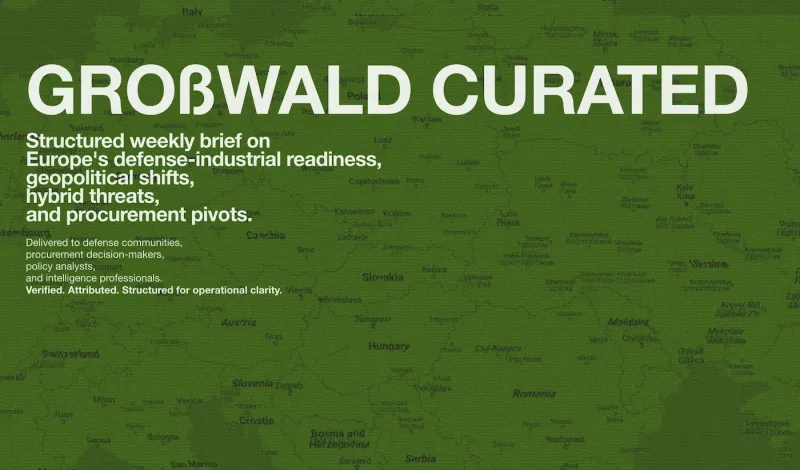Großwald Curated | No. 20 — 5 Percent, Deep-Strike, Shadow Waters: Europe’s Capability Crunch
May 12 – 18 2025 | NATO & European Defense — Weekly Briefing. Curated for Policy, Intelligence, and Defense Communities in NATO / EU.

Europe just pivoted from debating “how much is enough?” to asking who can actually deliver.
NATO’s Five-Percent Doctrine marks the clearest shift since 2014—splitting the burden between 3.5% hard power and 1.5% infrastructure. Berlin and London answered with a 2 000 km Deep-Strike missile program; Brussels escalated sanctions on Russia’s shadow fleet and froze dormant Nord Stream assets. Istanbul’s peace track collapsed in 90 minutes. Cable sabotage and parcel bombs returned to the hybrid foreground.
But beneath these signals lies a structural tension we've tracked across prior editions.
This week extends three standing Großwald frameworks:
- The Readiness Delta (Curated No. 17): Germany is asked to field 60–80k additional troops—yet remains 20k short of its current goal, with conscription blueprints slipping again.
- The Conversion Gap (Curated No. 18): Europe’s budget surge continues, but labour shortages and NSPA scandals delay capability delivery.
- Strategic Ambiguity (Curated No. 19): Germany pulls public arms-aid lists amid backlash—restoring a deterrence logic shaped more by silence than signaling.
Spending ↑ must convert to Reach + Resilience ↑ — or deterrence dissolves.
This is a curated dispatch from the front lines of Europe’s defense pivot.
This Week’s Structure
At a Glance
1 | Spend-to-Defend Escalation — “Five Percent or Bust”
2 | Hybrid Front — Shadow Fleet & Subthreshold Pressure
3 | Diplomacy & Strategic Ambiguity — Istanbul Stall, E3–Weimar Fusion, Transatlantic Reset
4 | Industrial & Deep-Strike Surge
5 | Eastern Hardening — PLB Axis: Poland, Lithuania, Belarus
6 | Strategic Outlook — Next 14 Days

